Weather(ing) Crisis: On 28° North and Parallel Weathers
The 28th Parallel North Latitude—which passes through Mount Everest in Nepal, the Northern Himalayas and Rajasthan in India and the Sindh Desert in Pakistan—serves as an entry point for artists and researchers to examine the nature of weather and the ongoing climate crisis. The imaginary line is a designated “expeditionary weather station” as a part of the World Weather Network. As one of the participating organisations in the network, the Khoj International Artists’ Association invited Atul Bhalla, Raqs Media Collective, Mithu Sen, Shahana Rajani and Zahra Malkani (as Karachi LaJamia) to contribute commissioned projects over the course of two years, from June 2022 to 2024. The resulting exhibition 28° North and Parallel Weathers presents an intervention that constitutes a long term seasonal preoccupation with water and its myriad conceptual possibilities.
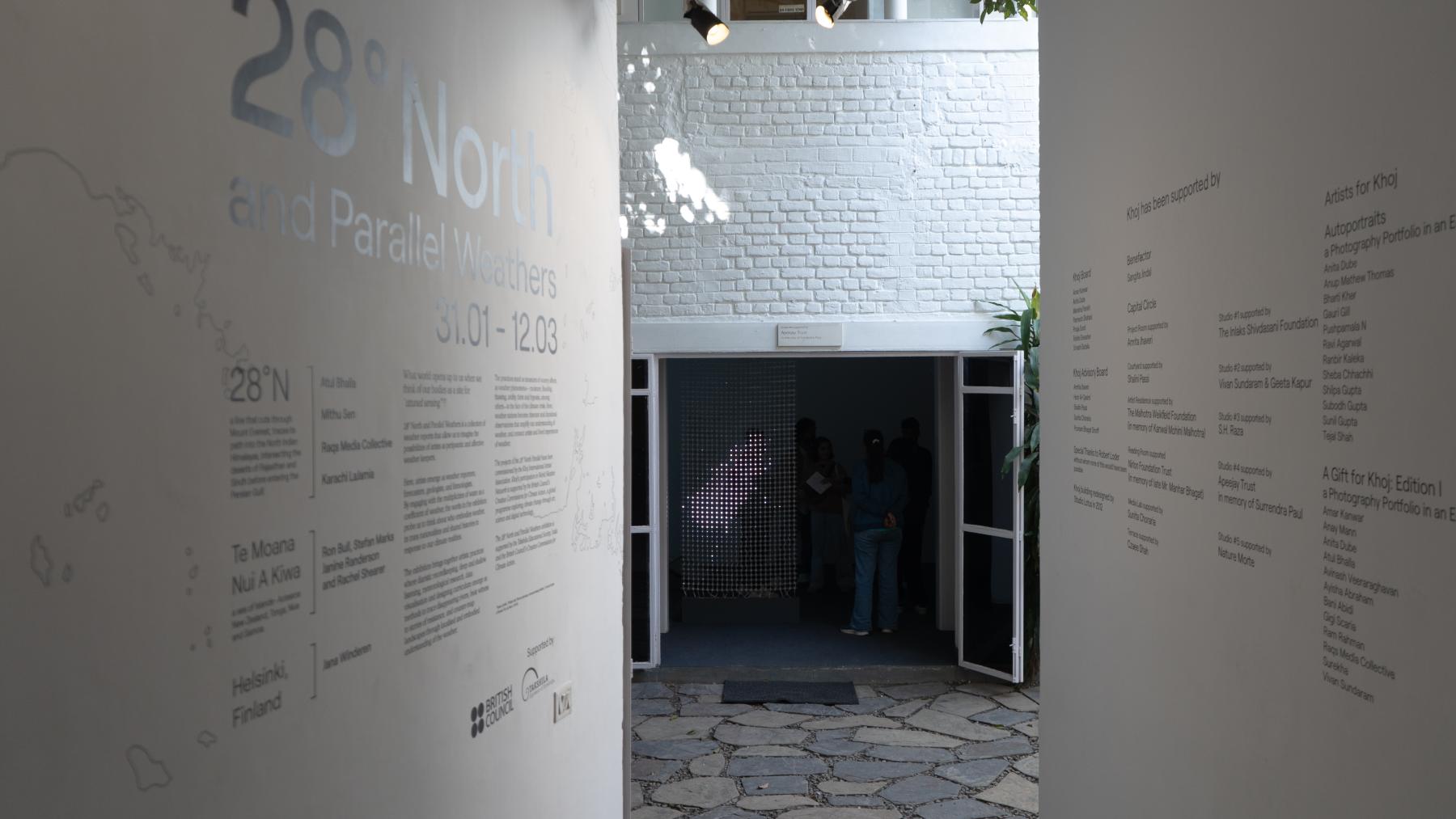
Exhibition view of Na-Bam (Measure without Measure) by Raqs Media Collective Video at 28° North and Parallel Weathers, Khoj Studios, 2024.
Taking inspiration from the Russian poet Osip Mandelstam, who views stone as an impressionistic diary of the weather of the past and the future, Atul Bhalla presents several such diary entries in his work False Clouds and Real Deluges (2023). An ornate dinner table greets visitors with a feast of rocks. The dainty porcelain dinnerware—upon which the rocks are served—is broken in parts and remade through the practice of kintsugi. Bhalla treats the stone with a certain tenderness that seems at odds with how we imagine its constitution. However, the artist highlights this contrast in order to remind us that rocks and the earth cannot be remade once destroyed. Another entry focuses on the Khejri trees of Rajasthan that provide shade and sustenance to other living beings in the sparse desert landscape. The artist presents portrait photographs of the trees as survivors, documenting their presence on his journey along the 28° latitude on a road trip from Delhi to Rajasthan. Water as moisture—which seeps into the soil, shapes rock formations, is secreted away by trees and transforms into clouds—is presented as constantly metamorphosing, even as it reminds us of the tenuous nature of life that hangs in balance.
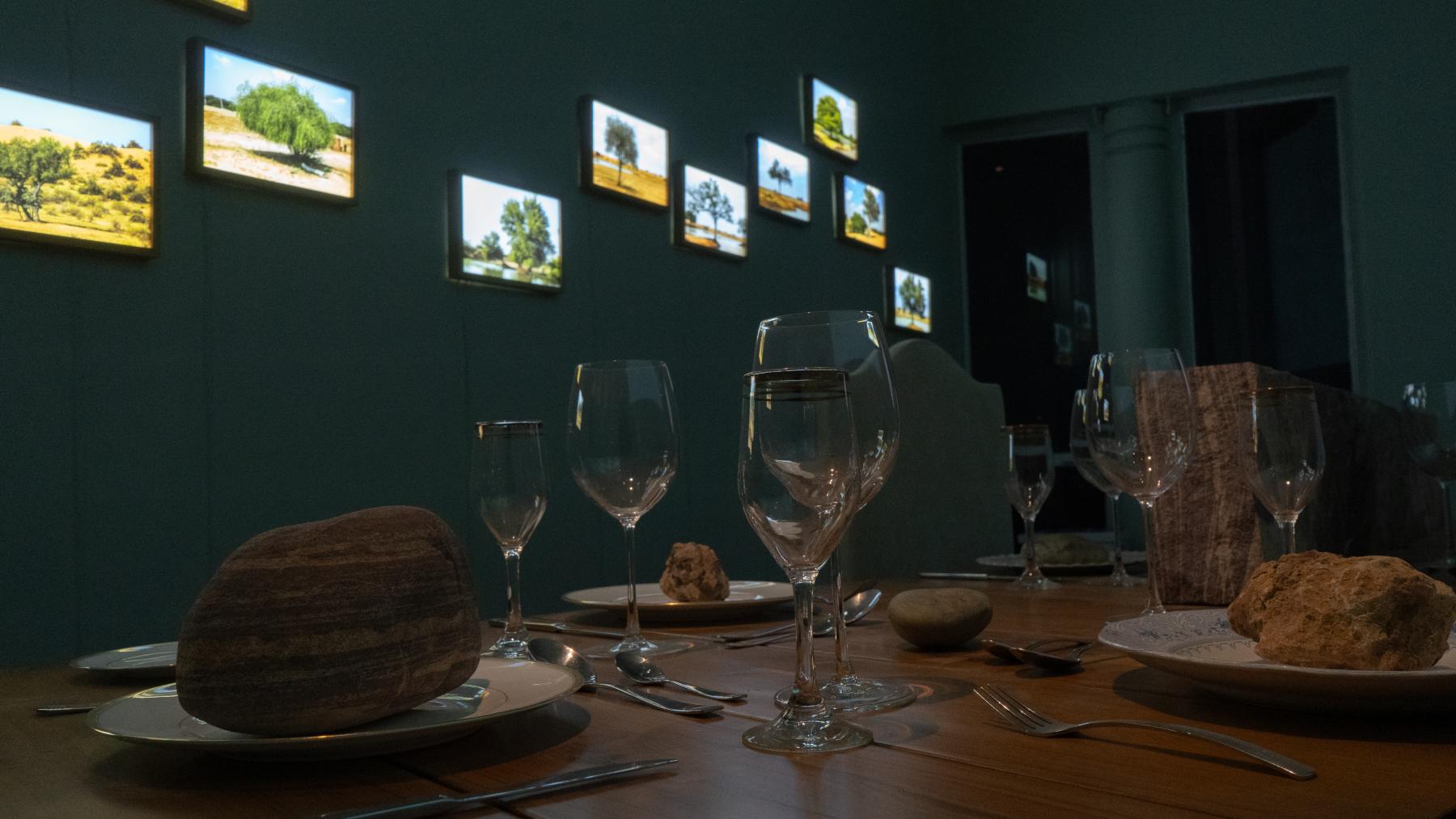
Details from False Clouds and Real Deluges by Atul Bhalla at 28° North and Parallel Weathers, Khoj Studios, 2024.
Na-Bam (Measure without Measure, 2024) by Raqs Media Collective explores the idea of thirst and deluge as they exist simultaneously in the current ecological moment. The title of the work is a reference to fishermen who speak of “na-bam”, where the depth of water cannot be measured by their bam or stick. For the artists, water becomes a measure for time and stories, as it serves as a container for meanings that are simultaneous and contradictory. The multi-channel installation weaves together fragments from the baolis (stepwells) of Rajasthan to the sacred groves of Osobo, Nigeria, where architectural and ecological knowledge preserve sustainable ways of living. Traces in the landscape serve as forms of measure and memory that become a part of lore, to be remembered and rediscovered in a modern world populated by buildings and airplanes. The artists also presented a work titled Beetle, which consisted of a screen of LED lights. Upon close viewing, the lights look random and isolated; however, on zooming out or viewing the piece from a distance, one can make out the form of a beetle. Playing with the idea of scale and perception, the artists highlight the crucial role of beetles in the cycle of life, where a dung beetle can help reduce methane emissions or a bark beetle can decimate pine forests and increase deforestation. Much like the butterfly of Edward Lorenz’s theory, the beetle’s role in the time of climate change sets off far larger consequences in what the artists call “beetle roulette.”
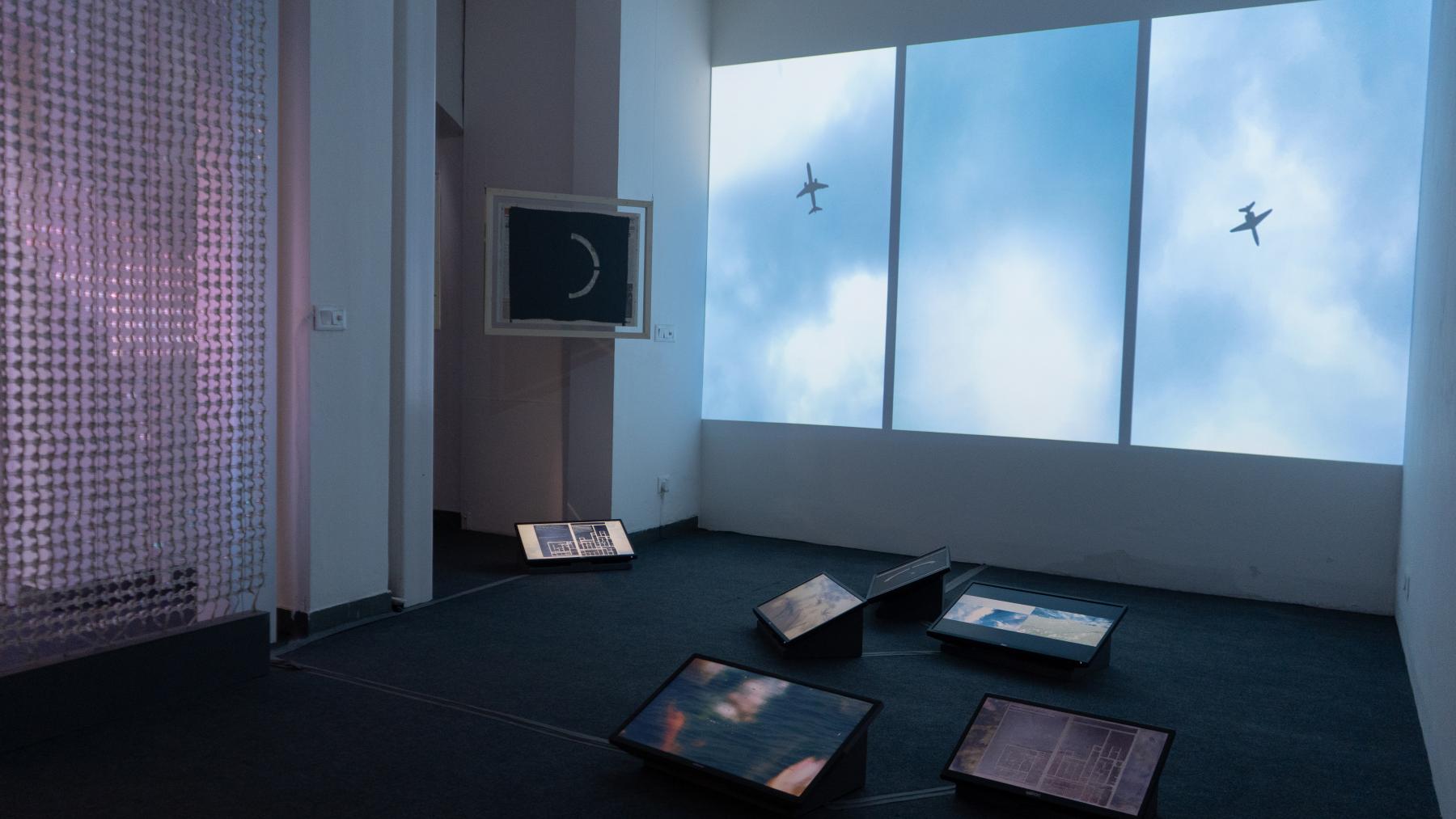
Na-Bam (Measure without Measure) by Raqs Media Collective Video at 28° North and Parallel Weathers, Khoj Studios, 2024.
Karachi LaJamia’s Hamare Siyal Rishte (Our Watery Relations, 2023) seeks to retrieve a river from the dense urban network of Karachi. Some of the original research for the project was conducted in collaboration with the Pakistan Fisherfolk Forum and the Indigenous Rights Alliance. In the resulting film, A thread, a weave, a braid, a river—memory becomes a ritual in order to connect to water. In a moving sequence from the third chapter titled “To Draw/To Love”, a hand traces the path of the Malir River on paper, as Khuda Dino Shah recalls the braiding of river systems that have now been tamed or erased by the appearance of the highway. The video essay plays with the absence and presence of the seasonality of the river, as the complex river system is explained over shots of barren land. The promise of water is contained in the sand, which acts as a sponge and holds water all year round, such that if one were to sift through the sand, water would appear. The ephemeral river becomes a pedagogical tool to think of presence and relation as ecologies are braided together in a fine balance. The exhibition also presented textual works emerging from this pedagogical framing, including a “Sailaab Syllabus” and a colouring book for young children to learn about the river and its mythologies.
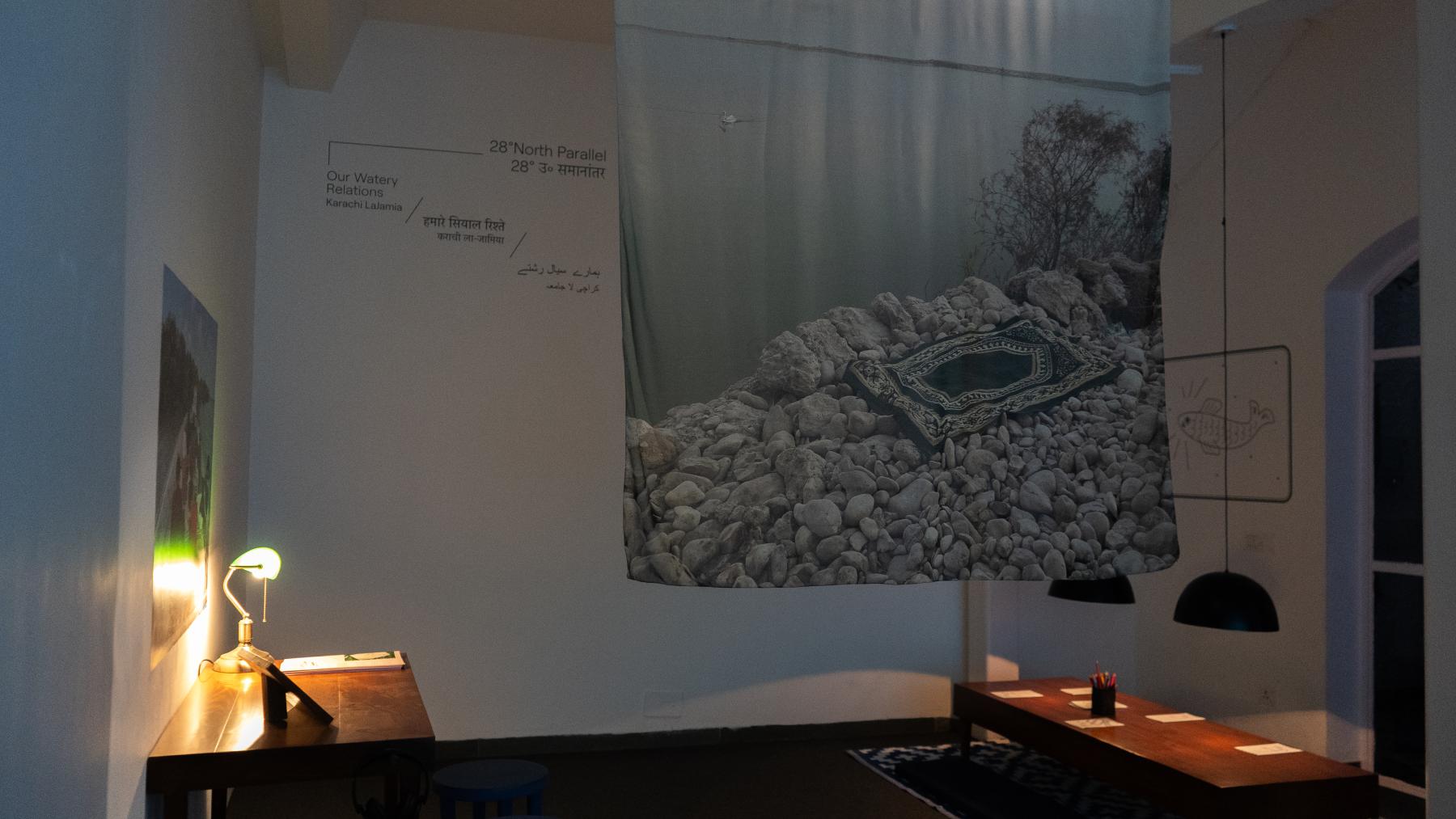
Exhibition view of Our Watery Relations by Karachi LaJamia at 28° North and Parallel Weathers, Khoj Studios, 2024.
The river finds a different path in Mithu Sen’s I Bleed River 2124 (2024), where the artist imagines the Brahmaputra in the future. A century from now, a fire rages over what was once the widest river in the country. Highlighting the connection between violence and ecological destruction, Sen’s speculative future is grim. In an undated river diary, the artist explores the various ways in which to define a river and its close connection to politics and memory. Timestamps placed at the bottom indicate times and places to draw parallels between the point at which they have been recorded in India and sites of current conflict like Gaza, Myanmar or Mariupol. The river contains the simultaneity of loss and life and the impossibility of return.
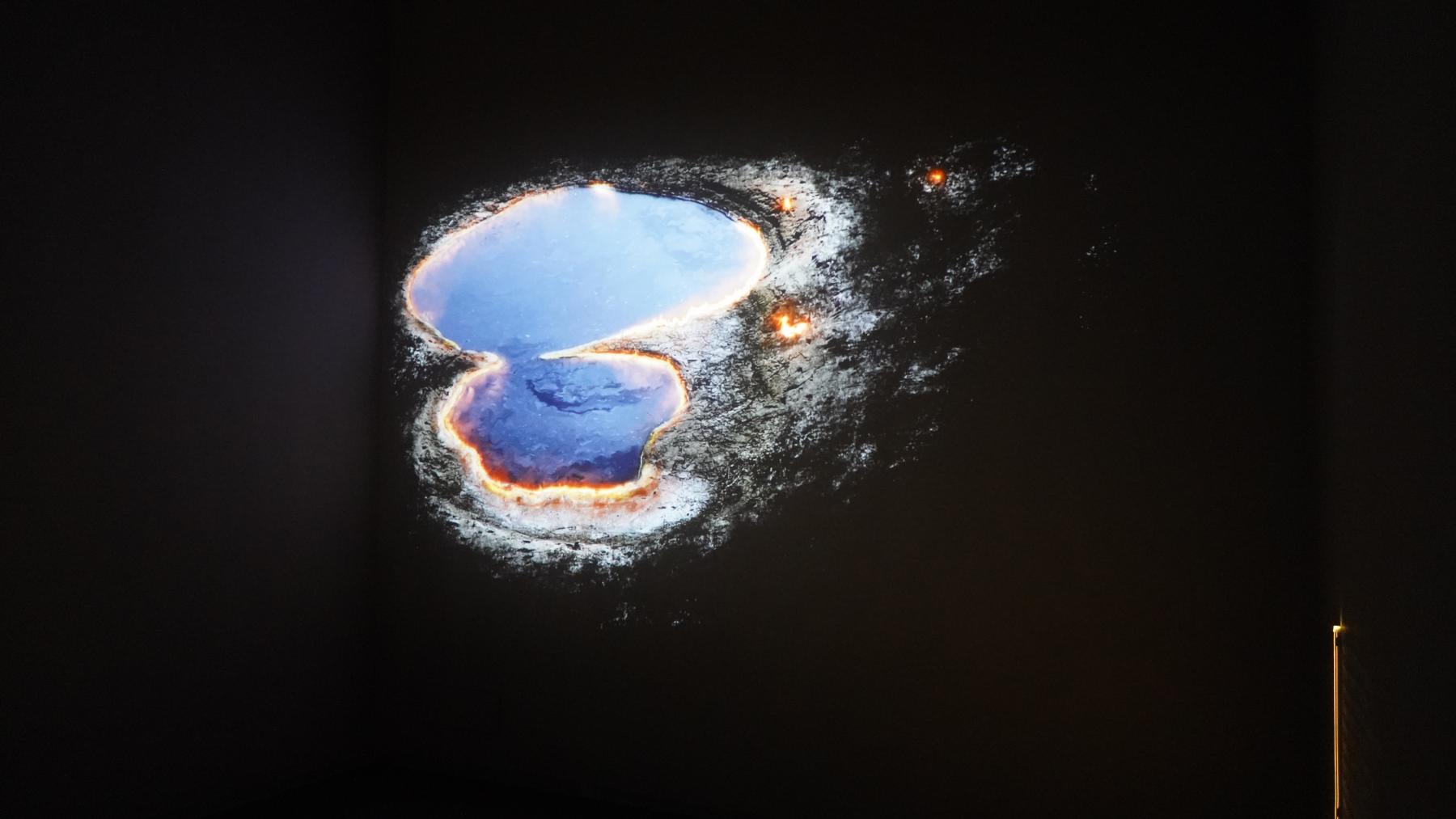
I Bleed River 2124 by Mithu Sen at 28° North and Parallel Weathers, Khoj Studios, 2024.
Also included in the exhibition were the works Ngā Raraunga o te Mākū: the data of moisture (2023) by Ron Bull, Stefan Marks, Janine Randerson and Rachel Shearer and Listening Through the Dead Zones (2021) by Jana Winderen which comprised the Parallel Weathers segment, as projects commissioned as part of similar weather stations in New Zealand and Finland. The two projects thematically corresponded to the exploration of water as Ngā Raraunga o te Mākū: the data of moisture interweaves readings from sensors at the Haupapa Tasman glacier with stories from the Kāi Tahu people; while Listening Through the Dead Zone creates multiple soundscapes of aquatic life in viable oceanic and sea zones. The exhibition expanded the experience of interaction by also including a reading room with various resources and a glossary of terms that evolved over the course of the project to frame a transnational vocabulary around climate crises.
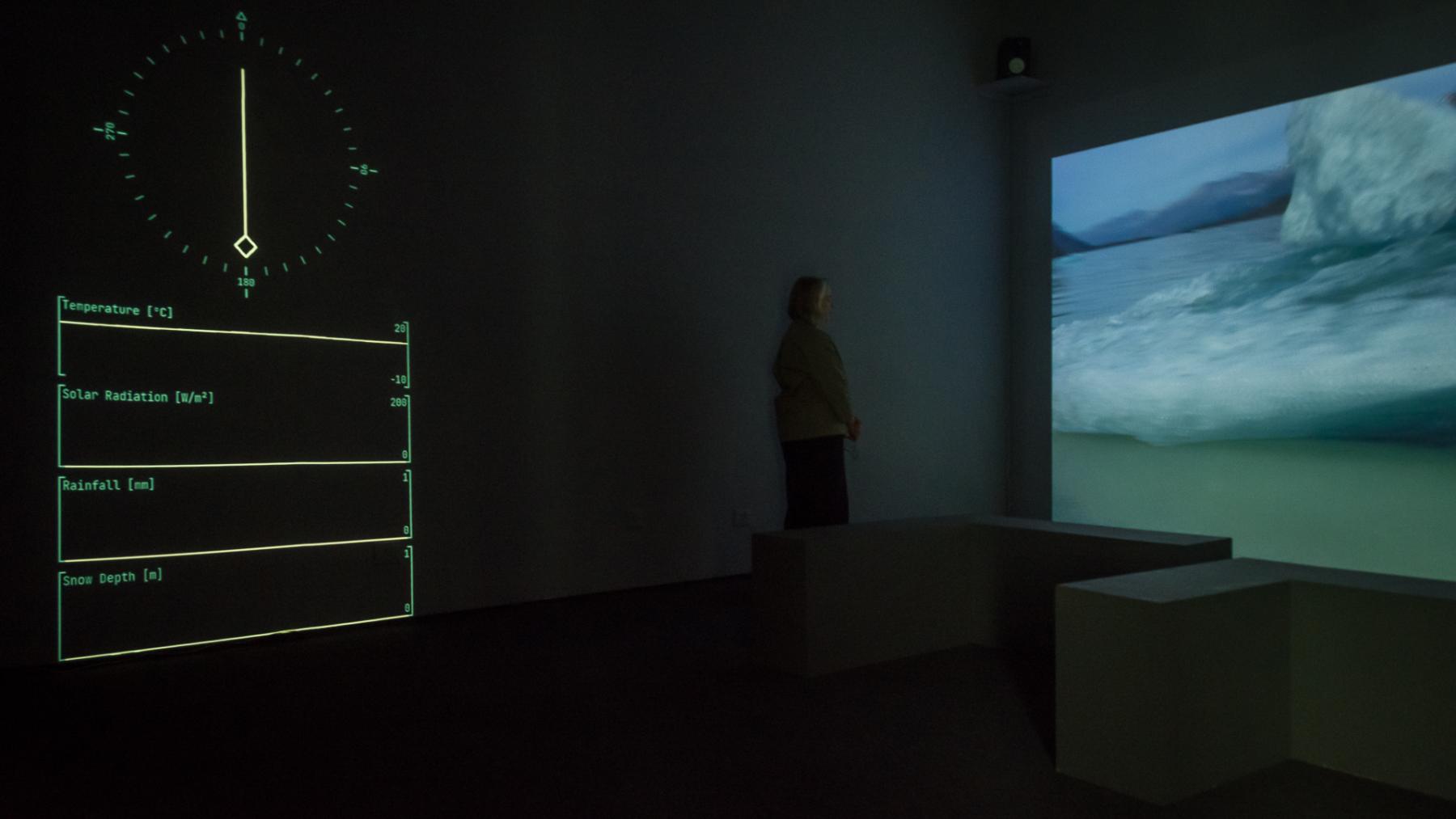
Ngā Raraunga o te Mākū: the data of moisture by Ron Bull, Janine Randerson, Rachel Shearer and Stefan Marks, Te Tuhi, at 28° North and Parallel Weathers, Khoj Studios, 2024. (Photo courtesy: Stefan Marks)
Drawing parallels across the imaginary line, the exhibition serves as a fascinating amalgamation of research and practice. Emphasising various forms of storytelling and witnessing, the “dispatches” from the 28° North foreground the urgent need to act by raising questions about the past, present and future as they speak to one another. The diverse climates, weather patterns and landscapes along the latitude lend themselves to distinct points of entry, even as they are unified by a common concern. By working with water and weather—something that one takes for granted without realising how much it affects us—the artists propose ways of thinking about how to weather the current ecological crises.
To learn more about artistic interventions framed around the current ecological moment, read Ankita Ghosh’s review of Hari Katragadda’s solo show Lost River, Pamudu Tennakoon’s reflections on the panel Seeding a Grove of South Asian Solidarities at Colomboscope 2024 and Annalisa Mansukhani’s interview with Ravi Agarwal on his shows at the Serendipity Arts Festival 2023.
All images courtesy of the artists and Khoj International Artists’ Association.




